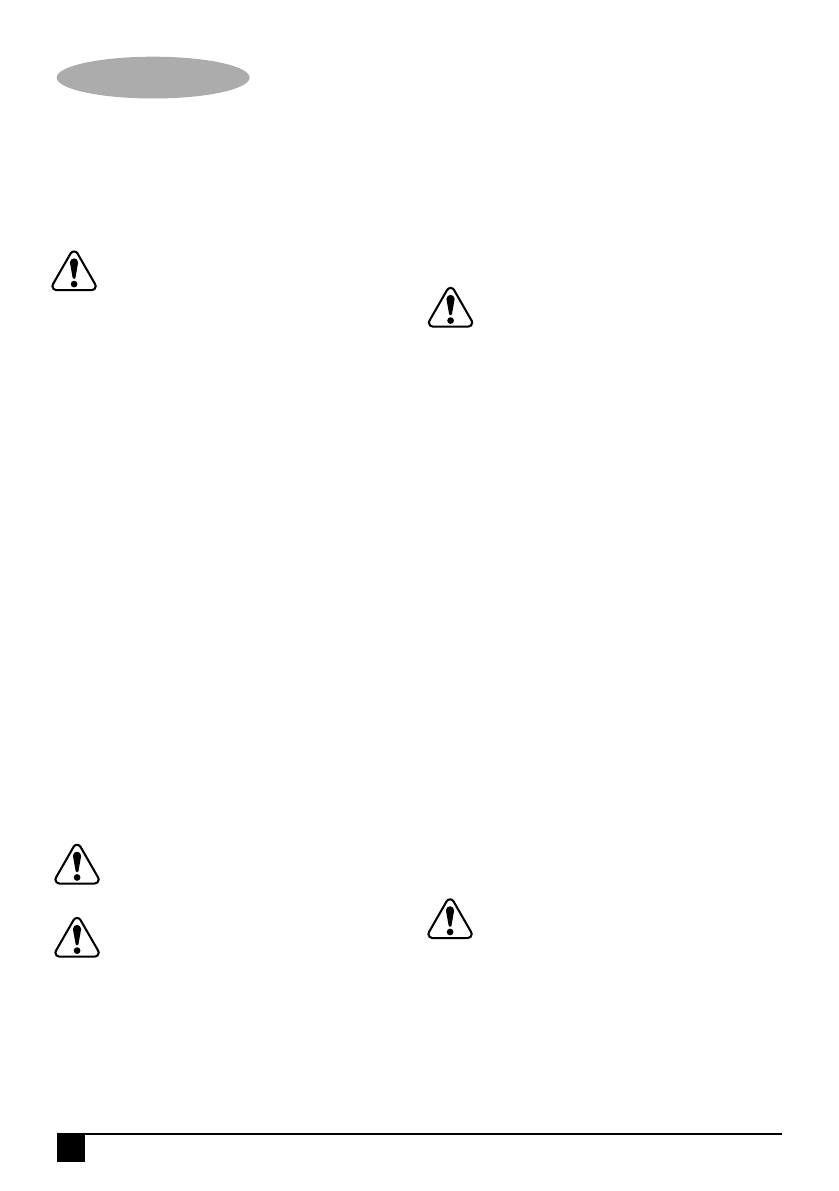Шуруповерты Stanley STDR5206 - инструкция пользователя по применению, эксплуатации и установке на русском языке. Мы надеемся, она поможет вам решить возникшие у вас вопросы при эксплуатации техники.
Если остались вопросы, задайте их в комментариях после инструкции.
"Загружаем инструкцию", означает, что нужно подождать пока файл загрузится и можно будет его читать онлайн. Некоторые инструкции очень большие и время их появления зависит от вашей скорости интернета.

6
ENGLISH
• Always wear eye protection. Any power tool can throw
foreign objects into your eyes and cause permanent eye
damage. ALWAYS wear safety goggles (not glasses) that
comply with ANSI safety standard Z87.1. Everyday
glasses have only impact resistant lenses. They ARE
NOT safety glasses
Warning!
Glasses or goggles not in compliance
with ANSI Z87.1 could cause serious injury when
they break.
• Never use the drywall screwdriver to drive screws other
than drywall screws. The drywall screwdriver and the
screwdriver bits are designed specifically for driving
drywall screws.
• Only use screwdriver bits that are designed for use with
this tool.
• Always keep hands out of the path of the drywall screw.
Avoid awkward hand positions where a sudden slip could
cause your hand to move into the path of the saw blade.
• Make sure there are no nails or foreign objects in the
part of the workpiece to be cut or sanded.
• To avoid injury from accidental starting, always remove
the plug from the power source before installing or
removing a screwdriver bit or when adjusting the depth
control.
• Always check the wall area where screws will be driven
to be sure there are no hidden electrical wires in the
area.
• Never leave the Lock-on button ON. Before plugging the
tool into the power source, make sure the lock-on button
is OFF.
General Safety Warnings
Warning!
Wear a dust mask that is designed to be
used when operating a power tool in a dusty
environment.
Warning!
Dust that is created by power sanding,
sawing, grinding, drilling, and other construction
activities may contain chemicals that are known to
cause cancer, birth defects, or other genetic abnormalities.
These chemicals include:
• Lead from lead-based paints
• Crystalline silica from bricks, cement, and other masonry
products
• Arsenic and chromium from chemically treate lumber
The level of risk from exposure to these chemicals varies,
according to how often this type of work is performed. In
order to reduce exposure to these chemicals, work in a
well-ventilated area, and use approved safety equipment,
such as a dust mask that is specifically designed to filter out
microscopic particles.
Safety Extension Cord
Warning!
Keep the extension cord clear of the
working area. Position the cord so it will not get
caught on the workpiece, tools or any other obstructions
while you are working with the power tool.
Make sure any extension cord used with this tool is in good
condition. When using an extension cord, be sure to use one
of heavy enough gauge to carry the current the tool will
draw. An undersized cord will cause a drop in line voltage
resulting in loss of power and overheating.
Be sure your extension cord is properly wired and in good
condition. Always replace a damaged extension cord or
have it repaired by a qualified electrician before using it.
Protect your extension cord from sharp objects, excessive
heat and damp or wet areas.
Use a separate electrical circuit for your power tools. This
circuit must not be less than 14 gauge wire and should be
protected with either a 15 A time delayed fuse or circuit
breaker. Before connecting the power tool to the power
source, make sure the switch is in the OFF position and the
power source is the same as indicated on the nameplate.
Running at lower voltage will damage the motor.
Contents
Carefully unpack the drywall screwdriver. Compare the
contents against the “Drywall screwdriver components” chart
below.
Assembly and Operating
Warning!
To avoid fire or toxic reaction, never use
gasoline, naphtha, acetone, lacquer thinner or
similar highly volatile solvents to clean the tool.
Forward/Reverse switch (Fig. B)
The forward/reverse switch (4) is conveniently mounted in
front of the variable speed trigger switch (5). To make the
screwdriver rotate clockwise for driving screws, push the
forward/reverse switch (4) to the left. To make the
screwdriver rotate counter-clockwise to remove screws,
push the forward/reverse switch (4) to the right.
(Original instructions)









































